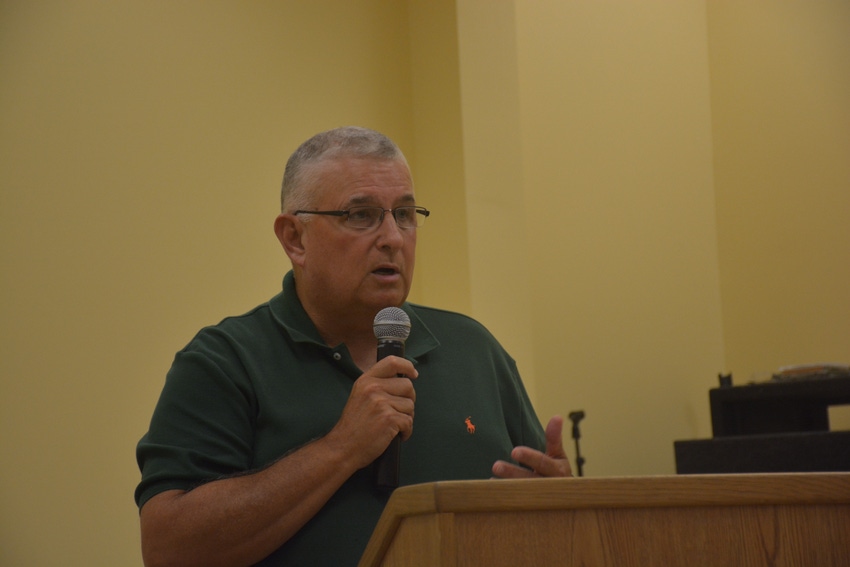
Cotton producers will have some important decisions to make once sign-up for the farm program begins, and the most important thing to remember is that cotton is not a covered commodity under the 2014 farm bill, according to Craig Brown, vice president of producer affairs for the National Cotton Council.
Speaking at the morning session of the 2014 North Carolina Cotton Field Day Sept. 10 in Rocky Mount, Brown said crop insurance is the focus for cotton under the 2014 farm bill. “The farm bill does not have an income support provision for upland cotton, as do the other commodities. We still have the marketing loan for upland cotton which is 52 cents per pound this year. It is in effect for 2014 and the life of this farm bill,” Brown said.
For cotton producers, deciding what crop insurance option to select will be the most important decision, Brown said. Beginning with the 2015 crop, cotton producers may choose two crop insurance options, either Stacked Income Protection program (STAX) or Supplemental Coverage Option (SCO), which must be selected from a crop insurance agent
Brown said cotton producers will need to make their crop insurance decisions soon because it is expected that signup for STAX or SCO will have to be made by the normal sales closing date which is Feb. 28, 2015. Enrollment has not yet begun, but it should start soon, Brown added.
STAX is attractive to cotton producers because it is subsidized at 80 percent, the highest level of premium subsidy of any crop insurance product, Brown said. Producers will only pay 20 percent of the premium, which is offered by practice, either dry land or irrigated. “In North Carolina, there is very little irrigated cotton, and the chances are you are not going to have the option to buy an irrigated policy,” Brown added.
STAX is exclusive to upland cotton that provides cotton growers a good level of protection, Brown said.
“The biggest question on this farm bill that I get hit with the most is this new term ‘generic base.’ So what is generic base? Generic base was what your cotton base was in 2013. It becomes generic base,” Brown explained.
Generic base is only applicable to cotton since cotton is not a covered commodity under the farm bill, Brown said. This gives cotton producers a great deal of planting flexibility on what they can do with the cotton base on their farms, he added.
“You have the opportunity to make some planting decisions on that generic base that will protect your program eligibility for the covered commodities. If you plant a covered commodity on that generic base that adds to your eligibility for that base for that crop that year,” Brown said.
“Obviously you can plant cotton on that land and you’re eligible for STAX or SCO and the marketing loan for cotton, but you have a lot of flexibility on what you plant on that generic base,” Brown said.
“The main difference between generic base and the covered commodity base is that generic base is a coupled base, you actually plant the crop to get the credit. The other basis is de-coupled. You don’t have to plant the crop or any crop to be eligible for the payment,” he said.
“If you had cotton base in 2013, you have generic base now. If you didn’t have cotton base in 2013, you don’t have generic base no matter how much cotton you planted since 2002. That’s the last time you had a chance to adjust the base on your farm,” he explained.
About the Author(s)
You May Also Like






